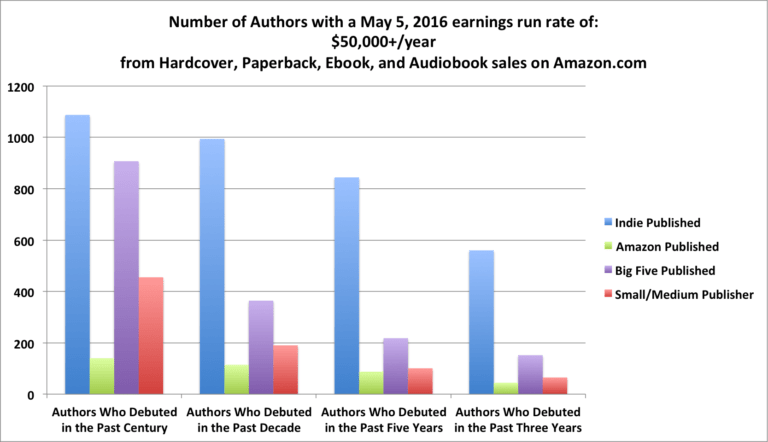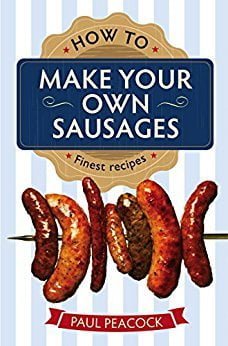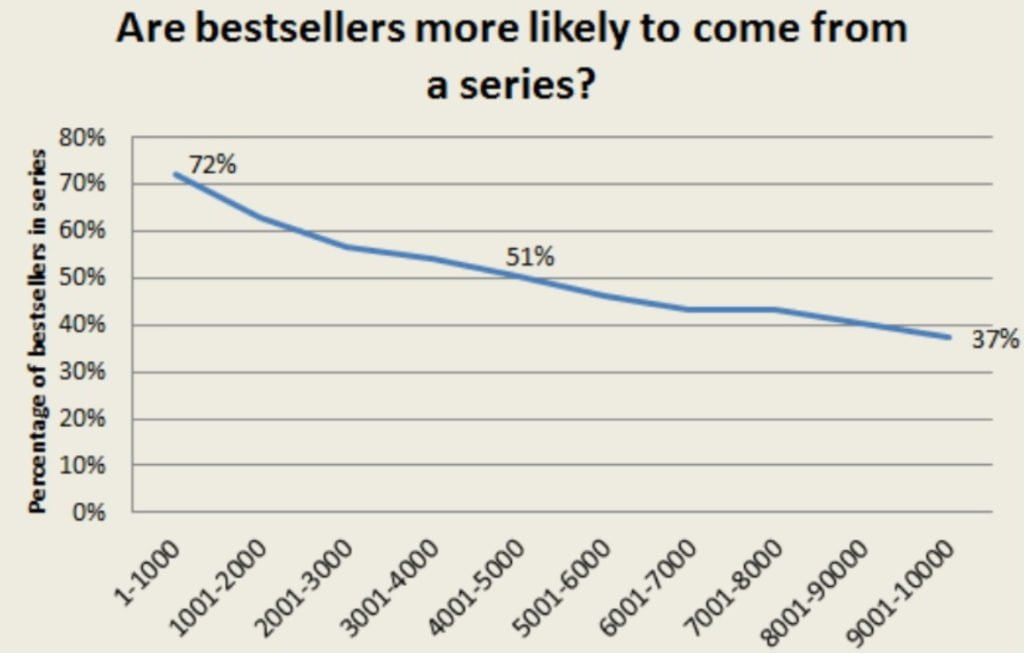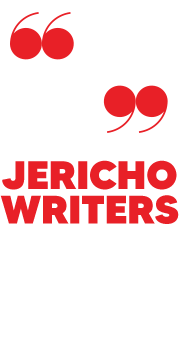What are the pros and cons?
What does a publisher do?
Which route generates more money?
Are self-published books successful?
And which approach is right for you?
When I wrote my first book, things were easy. You wanted to sell books? You needed to get hold of a book publishers. Simple.
The rise of Amazon and the e-book obliterated all those old certainties – and made a whole array of exciting new options of how to publish a book available to authors. But this leaves one important question for writers; do you follow traditional publishing routes or explore self publishing possibilities?
In the twenty years since my first book deal, I’ve published books both traditionally, and self published them as an indie author. I’ve made money and hit bestseller lists via both routes. But even now, if you asked me “which is better?”, I couldn’t tell you.
Either option has advantages and disadvantages, and some types of author will find one specific route obviously appropriate to them. Other authors will just find it a hard call, because both routes look attractive.
The purpose of this blog post is, therefore, to lay out the pluses and minuses of traditional publishing, and of self-publishing. I’m not going to tell you what you ought to do. I will tell you what to expect in terms of pros and cons.
So sit tight. Let’s start with some basic definitions.
What’s The Difference Between Traditional And Self Publishing?
Traditional publishing (or just “trad publishing”):
- Means that the intellectual property rights in your manuscript are purchased outright by a publishing company (often a large multinational). The best known publishers include Penguin Random House, HarperCollins, Macmillan, and others.
- The sale normally takes place via a literary agent (and novelists, especially, will benefit from having an agent),
- The publisher will use its corporate contacts to make your book available for sale as widely as possible. That means you can expect your book to be sold via every e-tailer (notably Amazon), but also chain bookstores (Barnes & Noble or Waterstones, for example), supermarkets, indie bookstores, and so on.
- Your book will almost certainly appear in print – and quite likely in four separate editions (hardback, paperback, e-book, audio.)
- You stand a chance of being reviewed by formal outlets, such as newspapers.
- You would normally expect to receive an advance.
- If your sales are such that your advance ‘earns out’, you will also receive royalties – though many authors don’t see royalties at all.
- Your book now belongs to the publisher. If you want it back – that’s just tough. If you don’t like their marketing – that’s just tough. If you change your mind and want to go indie – well, you’ll either need to buy the rights back or just write a new book.
In essence, you are selling your work to a corporation, and that corporation will go about exploiting those rights. Sure, you can expect your editor to be nice to you, and to listen to your viewpoint and all the rest of it. But you’ve sold the book, and you’ve lost control. That’s not a bad thing necessarily, but you need to understand the basic nature of the transaction.
Self publishing (or “indie publishing”, or “e-publishing on Amazon”) is a totally different proposition.
Self Publishing:
- Means you never sell rights to the book. It’s yours.
- That also means there’s no advance in self-publishing. Rather the opposite: you’ll need to make some investments upfront, even if they’re not very large.
- Most indie sales take the form of e-books. (My own e-book sales volume is about 25 times greater than my print sales volume, and I’m not exceptional.)
- Means you are highly unlikely to see your book sold in physical bookstores on any kind of national or international basis. (Local store owners might be happy to stock a handful of books on sales or return, but that’s just being nice. You won’t make many sales from that route.)
- Equally, you won’t get reviewed in newspapers.
- And you’re responsible for everything: creating your product, marketing it, choosing an ebook format, everything.
We’ve adorned this blog post with pictures of old-fashioned rotary phones in a (slightly feeble) attempt to suggest that the trad vs indie issue marks a dichotomy as profound as the analogue phone / smartphone one. But the trad / indie division isn’t about a simple technical evolution. After all, modern publishers use plenty of technology too. They sell on Amazon too.
Really, what we’re looking at is a totally new ability for indie authors to reach a worldwide audience without the support of a corporate publisher. Amazon created that ability, and it’s astonishing, and it’s wonderful.
But Big 5 publishers can also get you in front of a very broad audience.
So which route do you choose? Which option do you take?
Who Makes More Money?
Traditional Publishing vs Self Publishing
There are a lot of questions with unclear, blurry answers.
This question has a clear and emphatic one.
Indie authors are, today, generating more money from their work than traditionally published ones. That situation is likely to become progressively more true over time. It remains true, no matter which income level you want to look at.
Here, for example, is one graphic from the excellent AuthorEarnings.com:

To see that, look first at the left hand side of the graph: “Authors who debuted in the past century”. Clearly, that includes a host of huge-selling and long-established traditionally published names -that’s the category where you find your Lee Childs, your John Grishams, your Stephen Kings.
But those guys were all established before indie publishing was a thing. More relevant to your situation is the cluster of bars on the right of the graph: “authors who debuted in the past three years.” You’ll see that the number of indie-published authors (in blue) vastly exceeds the number of Big 5 authors (in mauve). That is, there are way, way more authors earning $50,000 or more on Amazon than there are trad authors.
Now yes, trad authors may have better access to income sources beyond Amazon. (eg: Barnes & Noble, other physical retail outlets, non-Amazon e-stores, foreign translation deals, film & TV money, etc), but:
(A) you can exaggerate the size of that disparity.
I self-publish my Fiona Griffiths books and I’ve sold audio rights, foreign rights, and am in detailed discussions on a possible major TV deal. Many more experienced indies would be in the same approximate position.
(B) the picture doesn’t change, even if you allow for greater non-Amazon income on the part of trad authors.
This post isn’t quite the right place to go into all that. The numbers are now a little out of date, but if anything today’s numbers are even more favourable to indies.
How Come Self Publishers Make More Money?
Well, it’s not rocket science. If a trad author sells $100 of ebooks on Amazon, Amazon will keep $30 as its (very fair) retailer share. The rest passes to the publisher, who will keep 75% of the amount, passing the rest (25% * $70 = $17.50) to that author’s agent.
That author’s agent will help themselves to their contractual 15% and pass the balance (85% *$17.50 = $14.88) to the author.
So trad authors makes $14.88 from $100 of e-sales.
Not a lot, right?
The indie author sells $100 on Amazon. They get $70. No deductions, just cash in the pocket, paid monthly, and with exceptionally clear and detailed reporting.
Indie authors make $70.00 from $100 of e-sales.
That huge – almost fivefold – difference in what a trad author gets from an e-book sale and what an indie author gets from the same sale accounts for the basic difference in income levels.

The fact is: an indie author can price their books more cheaply than a trad author’s, and sell fewer copies, and still make more money.
That is the golden engine behind the entire self-publishing revolution.
But even if you’re quite focused on money, the “who earns more?” question doesn’t settle all debate. You need to remember, for example, that:
- Traditionally published authors will (mostly) get an advance.
- Self published authors will be putting time and money into the publication and marketing process. Focusing on top-line revenues ignores all that.
- The “top of the world” type outcomes are still way more common with trad than with indie publishing. (I’m talking about explosive international successes like Gone Girl, or Girl on a Train. It’s not that hits like these are ever frequent, nor that huge hits are impossible via indie routes, but that level of global attention does mostly fall to trad published authors. It’s just the way it is.)
- Lots of self published authors sell effectively nothing. They may make a loss from self publishing. In fact, it’s probably true that a majority of indie authors lose money (because their books are bad, or their marketing is bad, or both. Equally, lots of traditionally-oriented authors knock at the gates of the traditional industry and are never admitted. Those guys don’t make money either.)
And forget about the boosters from either camp.
Making money from either trad or indie publishing is hard. Most writers don’t earn a living from what they do. There are a zillion other reasons to write of course (because it’s brilliant!), but Earning Fame and Fortune isn’t one of them.
Want to know how I earn $100,000 a year from self publishing, with minimal effort?
Well, I’ve put together an entire video course on the subject, that runs you through the entire self-pub process and will ensure you avoid all the mistakes I made along the way. The course is expensive to buy – so don’t buy it! It’s free to members of Jericho Writers – and we’d just love it if you chose to join our club. All the info you need is here. I really hope you hop on board.

Traditional Vs Self Publishing: Different Genres/Authors
What’s right for you?
One of the problems with the traditional vs self publishing question is that the advantages and disadvantages of the two routes vary depending on who the author is.
So here is a quick tour of the major issues.
Do Traditional Publishers Even Want You?
As a very rough guide, literary agents receive about 2,000 submissions a year, and they are likely to take on 2-3 authors from that torrent.
Put another way, you have a roughly 1 in 1,000 chance of being taken on by a given agent.
And suppose an agent does take you on. Even then, the agent may sell hawk your book around, only to find that no one wants it. Or someone does want it, but only a micro-publisher who has no money to spend either on author advances or (more serious yet) on marketing. Or you end up with a digital-only imprint that won’t get your book into bookshops, which is the thing you always had your heart set on.
The truth is, I’m not sure that those Stats of Doom should alter your decision one way or the other.
Here’s the simple truth:
You can’t sell a bad book.
I mean, yes, sure, you can make some sales with almost anything. But if you want to make a career at this game, you need to write well enough to persuade a large audience that you have what it take. And that’s why the top indies move in and out of traditional publishing with ease. Mark Dawson was published by Macmillan, then switched to indiedom. Hugh Howey was and is an indie, but he’s done some huge traditional deals too.
The levels of quality needed aren’t set by your choice of publishing route. They’re set by readers. So the bar is set high, no matter what.
And that’s good. We’re writers. We want to write well. So please: raise that bar.
What Genre Is Your Book?
Indie authors do well in genre fiction – and the more genre the better.
So if you take a niche like military sci-fi or out-and-out romance, you’ll find that indies account for 80% or more of the market. Indies also do very well in crime, thrillers, westerns, SF, fantasy, young adult, women’s fiction, and so on.
At the same time, there is essential no indie market for serious literary fiction.
If you want to write the kind of books that could sit alongside work by Jonathan Franzen or Elizabeth Strout etc, then you can forget about self-publishing completely. The route just won’t work for you.
WIth non-fiction, if your work is the sort of thing that might be found by its title (“How to Make Your Own Sausages”), then self publishing is very viable indeed. If it’s a one-off (eg: Daniel Kahneman, Thinking, Fast and Slow), then indie publishing will not work.
Short message:
Genre fiction and subject-led non-fiction work very well on the indie model. With anything else – take care.

Are You Writing In A Series?
That sounds like a funny question, right, but here’s the thing:
For indie authors, series fiction sells way, way better than non-series fiction.
Here, for example, is data collected by Smashwords which shows that around three quarters of bestselling fiction (in Smashwords’ own sample) is series-driven. At the bottom end, around two-thirds of the books are standalones.

And sure, Smashwords’s userbase isn’t quite representative of the broader indie market – but the fact is that series books sell much, much better than standalones: probably in large part, because an indie author’s selling tools work better for such work.
If you are currently writing standalone work, but are intending to explore the indie route, I’d urge you to consider how you could series-ify your work. For example, if you write standalone private investigator novels, maybe your PIs could all work for the same agency, or run up against the same cops, or drink in the same bars or, really, anything to say to the reader, “Yes, this is the world you know and love.”
Short message:
If your work is not currently written in a series, then either think of ways to series-ify it . . . or consider traditional publishing as a better option.
Are You Prolific?
Most successful indie authors will have lists of a dozen or more books for sale. Indeed, plenty of indies will really only hit six-digit earnings when they have 15-20 titles available.
if you just can’t see yourself writing that many books or if you don’t want to be under pressure to write 2-4 books a year (or even more), then the traditional route may be better for you.
But think about it. You may be able to write faster than you think. A writer’s first book is often a learning experience and often a wrestling match to get into shape. Books do come more easily with time, so you may be a faster writer than you quite realise at this stage.
Do You Want Traditional Acclaim?
What do you think will fulfil you as a writer?
Is it book sales and money and being able to give up work? If that’s the case, then the indie-publishing route may be better for you.
Or are you OK for money already? Do you want, instead, to see your work in ‘real’ bookshops? Do you want book reviews in proper newspapers? Do you want to be invited to literary festivals and invited to talk on radio, and all the rest of it?
If you want all those signs of acclaim, then traditional publishing is probably your only route to fulfilment. Please note that traditional publishing does not guarantee those things, not by any means. You can be traditionally published, and find that your publisher just hasn’t managed to get your book into many stores, and no newspaper reviews are forthcoming, and no literary festival is interested in hearing you speak. That experience is, indeed, more common than not.
All the same, those good things almost always flow only to traditionally published authors, so if that’s what floats your boat, you know what to do.

Are You Entrepreneurial? Will You Relish The Challenge Of Self Publishing?
Let’s face it.
Self publishing isn’t easy. You will either have to take on the following roles, or commission third parties to handle them for you
- Authoring (that’s your job!)
- Structural editing
- Copy-editing (try our copy-editing service here)
- Book formatting (e-book and print)
- Copy writing (book description)
- Cover designing
- Website construction
- Email list: building blocks
- Email list: copy
- Finance
- Advertising strategy
- Advertising creative
- Advertising monitoring and adjustment
Aside from the authoring, most of those things will either be done by your traditional publishers, or they’ll ignore them completely (effective digital marketing? from a Big 5 publisher? Hmm).
That still leaves some things down to you (notably, your website and email list) but no one will fret too much if you don’t do them at all.
In other words: if you want to be left alone to write and do not much else of anything, that is more possible with traditional publishing than it is with self publishing. It’s not advisable either way. But is it possible? Yes.
How Much Work Is Really Involved?
There are a lot of misconceptions about the amount of work involved in self-publishing and the type of work required. The result is that writers can make poor decisions because their information is faulty. It’s really easy to think, “Jeepers, I don’t want to do all that, so I’ll just have some highly paid, very experienced professionals to do it all for me.”
And yes, OK, there’s some truth in that – but only some.
So here are some countervailing thoughts:
- It’s still the case that traditional publishing tends to handle Amazon sales quite badly
I can’t even count the number of trad authors I know who tear their hair out with low energy & unintelligent e-marketing from their publishers. Indie authors who watch that hair-tearing just feel mildly puzzled that the whole thing should seem so arduous. Selling on Amazon is (in many ways) easy! - There is quite a lot of author-input needed in traditional publishing
As soon as you engage on the traditional publishing process, you will notice that (a) you care a lot more about your book than anyone else does, and (b) you don’t have any control over anything – you signed control away when you sold your book. The consequence is that, to make a difference to things, you have to work quite hard and from a place where your tools are cajoling / asking / yelling, rather than simply an ability to give orders. (“No, sorry, I don’t like that. Can you redo it? Thanks.”) - Much of the work in self publishing is around setting up your sales channel
There IS quite a lot of work and some expense in getting your website and email list set up as you need it to be. But that work takes place upfront. It’s basically a one-off. It’ll save you time and make you money for ever after.
Short message:
There is work involved in both routes and, believe me, you’ll care enough about your book that you’re happy to do any amount of work if that gets it sold.
Final Thoughts
What’s right for you?
You should probably go indie if:
- You are entrepreneurial
- You aren’t totally scared of a few numbers and a bit of tech. (You don’t need great expertise here; you just can’t have a powerful irrational aversion!)
- You are able to be fairly prolific
- You write genre fiction or subject led non-fiction
- You are happy to write in a series
- You favour income/readers over traditional bookstore sales / traditional channels of acclaim.
The more you check those boxes, the more definitely you are an indie author. If those boxes really, really don’t apply to you, you should go for the trad route.
And if you check some, but not all, boxes – well, it’s up to you. There’s no right or wrong answer here, and you don’t have to make a once-and-f0r-all choice. You can start out indie and go trad (or hybrid) later if you choose to. You can start out trad and migrate the other way if you prefer.
Truth is, this is a great time to be an author. You have more choice and more possibility than ever before. Enjoy the freedom – and happy writing!
Jericho Writers is a global membership group for writers, providing everything you need to get published. Keep up with our news, membership offers, and updates by signing up to our newsletter. For more writing articles, take a look at our blog page.











